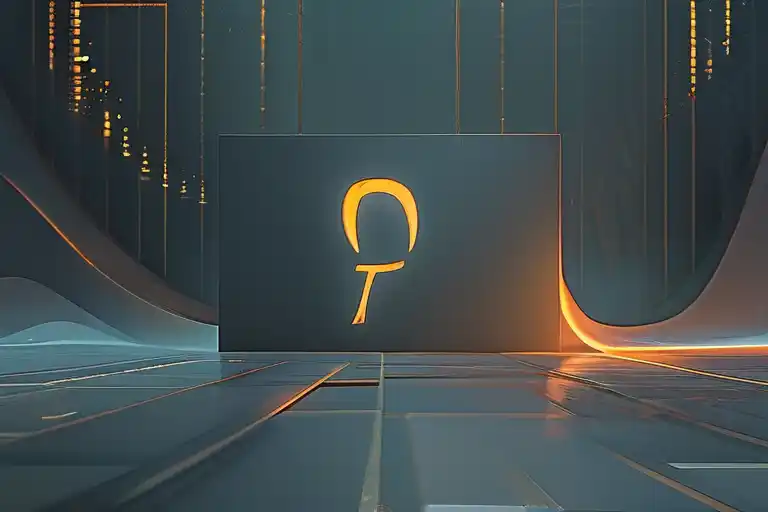The dashboard glows with a promise that exists only in that hazy space between sleep and consciousness—a digital fantasy where the zeros stretch into infinity. For a moment, the mind refuses to register their true meaning; it’s easier to tilt your head and pretend those zeros are leading digits, not trailing reminders. There’s something almost majestic in the emptiness, a clean slate so absolute it feels intentional. Awe, not disappointment, is the first response. It’s the kind of surreal clarity that makes you laugh softly to yourself before the reality sinks in.
Everything begins here, at zero. It’s a number full of potential, the blank page before the first word, the silence before the idea. We’re conditioned to want more—another digit in front, a comma, maybe even a decimal point signaling growth. But sometimes, all you get is zero. And in the world of content creation, that zero can feel louder than any payout.
These days, the metrics move slowly. Reads trickle in like cautious visitors. The old strategies—the ninja techniques of SEO, the viral hacks, the perfectly timed posts—don’t always deliver. Your survival toolkit starts to resemble something out of a wilderness show: rudimentary, scrappy, built for endurance, not elegance. You can’t defeat a Terminator with a chopstick, as they say. Especially not after a lunch of termites and crickets.
Crickets—both the sound and the snack. It’s that kind of irony that keeps you going.
And then there’s the new player: AI. It’s everywhere, making waves, stirring up hope and panic in equal measure. Writers are right to eye it with suspicion. ChatGPT has become the household name, the digital Shakespeare offering sonnets and sales copy in the same breath. If you’ve ever dreamed of writing a book, here’s your yes-man, ready to oblige. If you need to bid farewell to a colleague, it’ll draft the whole speech. It’s convenient, unsettling, and utterly fascinating.
But behind the convenience lies a deeper tension. For creators, the reality is more complex than a simple tool. It’s about reinvention, resilience, and remembering why we started creating in the first place.
The Reality Behind the Numbers
My payment dashboard displays a string of zeros that stretches further than my patience on a Monday morning. There’s something almost artistic about their perfect symmetry, a minimalist representation of creative aspirations meeting economic realities. These zeros aren’t just empty placeholders—they’re silent witnesses to the hours spent staring at blinking cursors, the countless revisions, and the hopeful anticipation that somehow, this month would be different.
Every creator knows this particular landscape of digital disappointment. We refresh analytics pages like modern-day fortune tellers seeking signs in the algorithmic tea leaves. The numbers tell a story, and lately it’s been a thriller where the protagonist keeps tripping over their own ambitions. There’s a certain dark humor in watching your most carefully crafted piece achieve roughly the same engagement as a spam comment about miracle weight loss pills.
Traditional writing techniques that once felt like trusted companions have started resembling those friends who promise to help you move but suddenly develop mysterious back pains when the heavy lifting begins. The ninja-like precision we cultivated—that perfect headline formula, the ideal posting time, the content length that supposedly pleased both readers and search algorithms—now feels like bringing a beautifully crafted handwritten letter to a laser light show.
This brings us to the Bear Grylls phase of content creation. Remember his survival shows where he’d demonstrate how to drink water from elephant dung or build shelter using nothing but desperation and clever camera angles? That’s what creating content has started to feel like—extreme survival in the digital wilderness. We’re all out here trying to make something nourishing from whatever the algorithm leaves behind, attempting to build visibility with the digital equivalent of sticks and hope.
The competition isn’t just other writers anymore. It’s the endless scroll of social media, the thirty-second video tutorials, the AI-generated content farms that operate with the relentless efficiency of a terminator assembly line. Trying to compete while maintaining quality and originality feels like attempting to stop that terminator with a chopstick—theoretically possible if you hit exactly the right spot at precisely the right moment, but realistically you’re just left holding a broken piece of wood while the machine keeps advancing.
What makes this particularly challenging is that we’re not just fighting for attention—we’re fighting for meaningful connection. The slow reads aren’t merely statistics; they represent fading opportunities to reach someone, to share an idea that might matter, to create that moment of recognition when a reader thinks “yes, exactly.” When engagement dwindles, it’s not just about metrics—it’s about the gradual silencing of voices that might have something valuable to say.
Yet there’s something almost liberating about hitting what feels like rock bottom. When the numbers can’t get much lower, you stop writing for algorithms and start writing for that one person who might actually need to read what you have to say today. You remember why you started creating in the first place—not for the impressive strings of zeros on payment dashboards, but for the occasional email from a stranger saying your words helped them feel less alone.
The survival mechanism we develop isn’t about becoming the most viral creator; it’s about becoming the most resilient one. It’s about learning to find satisfaction in the work itself rather than the metrics, to measure success in small connections rather than big numbers. Because sometimes the most important zeros aren’t the ones on your dashboard—they’re the reset buttons that allow you to start again with clearer priorities and renewed purpose.
The AI Writing Revolution
The dashboard zeros stare back, a silent testament to the shifting landscape. Where words once flowed like currency, there’s now a different kind of exchange happening—one where algorithms generate content while creators watch from the sidelines. ChatGPT has become the new ghostwriter in town, capable of drafting everything from retirement speeches to entire book chapters with unsettling efficiency.
Writers aren’t wrong to feel threatened. When a machine can produce a heartfelt farewell letter for your colleague of twenty years, something fundamental changes in our relationship with words. The same technology that helps someone craft their first novel without ever developing writing skills also threatens to devalue the very craft we’ve spent years honing. There’s legitimate concern that we’re witnessing the democratization of writing at the expense of its artistry.
Yet for all its capabilities, AI writing remains fundamentally limited. It’s like trying to defeat a Terminator with a chopstick—the tool might be impressive in theory, but it lacks the nuance required for truly meaningful communication. These systems can mimic structure and style, but they cannot replicate the lived experience that gives writing its soul. They don’t understand the weight of silence between two people who’ve worked together for decades, nor can they capture the particular way sunlight falls across your desk during those precious moments of creative flow.
The irony isn’t lost on anyone: the same technology that makes writing accessible to everyone simultaneously makes it harder for professional writers to earn a living. Platforms flood with AI-generated content, driving down rates and overwhelming markets that were already competitive. Readers encounter more words than ever before, but much of it lacks the distinctive voice and perspective that made human writing valuable in the first place.
What emerges is a complex picture of technological disruption. ChatGPT and similar tools aren’t inherently good or bad—they’re simply new variables in the creative equation. Their presence forces us to reconsider what makes writing worthwhile: is it the mere production of coherent text, or is it the unique human perspective behind those words? The answer likely determines whether we view AI as competition or as the most sophisticated autocomplete feature ever invented.
Perhaps the real challenge isn’t the technology itself, but our relationship to it. The same tools that threaten to replace writers could instead become collaborators—handling routine tasks while freeing humans for more creative work. The transition won’t be smooth, and many will struggle to adapt, but that’s been true of every technological shift throughout history. The question isn’t whether AI will change writing, but how we choose to respond to that change.
What remains clear is that no algorithm can replicate the particular way a human mind connects seemingly unrelated ideas, or the emotional resonance that comes from genuine experience. The zeros on the dashboard might tell one story, but the value of authentic human creation tells another—and that story is still worth writing.
The New Survival Playbook
When the zeros keep adding up on your dashboard and the crickets get louder in your comment sections, the instinct might be to either reject technology entirely or surrender to it completely. Neither extreme works. The real survival strategy exists in the messy, uncomfortable, beautiful middle ground where human creativity meets machine efficiency.
Let’s be clear: nobody wins a fight against a Terminator with a chopstick. The metaphor holds. Trying to out-write AI at its own game—pure volume, factual summarization, or generic template work—is a battle destined for depletion. The winning move is to stop fighting the machine and start training it. This isn’t about replacement; it’s about augmentation. Think of these new tools not as your Shakespearean replacement, but as your most overeager, slightly literal-minded intern. They excel at the grunt work: brainstorming twenty headline variations, summarizing a complex report into bullet points, or outlining a five-part article series from a single prompt. Your job is no longer to do all the writing; it’s to do the best thinking, and then direct the output.
This requires a fundamental mindset shift, a kind of creative jiu-jitsu. Your value is no longer rooted in your ability to string sentences together faster than anyone else. It’s anchored in your taste, your unique perspective, your lived experience, and your ability to connect ideas in ways a large language model, trained on a vast but impersonal dataset, simply cannot. The AI can mimic a tone, but it cannot replicate the weight of your personal history behind a chosen word. It can generate a competent farewell letter for a colleague, but it cannot recall the inside joke from that stressful project three years ago that would truly make them laugh. That is your territory. That is your unassailable value.
This is where the termites and crickets come in—the Bear Grylls survival diet of the content world. It’s about being willing to consume and utilize whatever is available to sustain yourself and keep moving forward. Maybe that means using an AI tool to overcome the blank page terror of a first draft, freeing you to focus your energy on the final, human-polished version brimming with personality. Perhaps it’s leveraging transcription software to turn your rambling, passionate voice notes into raw text, which you then sculpt into something coherent. It’s a resourceful and pragmatic approach to creation, one that prioritizes the final outcome over a purist ideology of how that outcome must be achieved.
The path to differentiation, then, is not to be more like the AI, but to be more unlike it. Double down on your humanity. Infuse your work with the anecdotes that only you have, the opinions that might be controversial, the flawed and vulnerable asides that make a reader lean in and think, “Ah, a real person is behind this.” Develop a voice so distinct that if a client or reader encounters it anywhere, they immediately know it’s you. An AI can write a good article on “10 Content Monetization Strategies.” Only you can write a compelling piece about the time you tried all ten and failed spectacularly at nine of them, and what you learned in the process. That story, that specific lens, is your competitive moat.
Ultimately, the new survival strategy is a call to ascend the value chain. Move from being a creator of generic content to a curator of unique insight. Use the time saved on drafting and structuring to go deeper into research, to conduct interviews, to develop a stronger thesis. Let the machine handle the raw material while you focus on the artistry. The goal is to build a creative practice where AI handles the heavy lifting of information logistics, and you are left to do what you do best: feel, think, and connect on a human level that no algorithm can ever truly simulate. The future belongs not to those who can write, but to those who have something to say.
Finding Your Path in the New Creative Landscape
This strange dance between human creativity and artificial intelligence isn’t ending anytime soon. The tools will keep evolving, becoming more sophisticated, more convincing, and more integrated into our creative workflows. Yet amid this technological whirlwind, something remains constant: the irreplaceable value of human perspective.
ChatGPT and its counterparts excel at pattern recognition, at reassembling existing information into coherent structures. They can mimic style, generate plausible content, and handle routine writing tasks with impressive efficiency. What they cannot do is live a human life—experience the particular ache of disappointment, the sudden spark of inspiration from an unexpected conversation, or the subtle nuances of emotion that give writing its depth and resonance.
Your survival mechanism as a creator isn’t about outsmarting the machines at their own game. It’s about leaning into what makes your voice uniquely human—the imperfections, the personal biases, the specific way you see the world that no algorithm can replicate. The termites and crickets of your creative diet—those unusual experiences and perspectives—become your competitive advantage in a world filling with AI-generated content.
This doesn’t mean rejecting the tools altogether. The most adaptive creators will learn to use AI as a collaborator rather than seeing it as competition. Let it handle the tedious parts—research summaries, initial drafts, editing suggestions—while you focus on bringing the human elements: original ideas, emotional depth, and that intangible quality that makes writing feel alive rather than merely correct.
The path forward isn’t about choosing between complete rejection or total embrace of AI writing tools. It’s about developing the wisdom to know when to use them and when to set them aside. Some projects will benefit from AI assistance; others will require the pure, unmediated expression of human thought and emotion.
Remember that the blank page—whether filled by human hands or algorithm—always begins with zero. What matters isn’t the starting point but what you build from it. Your perspective, your experiences, your particular way of stringing words together—these remain your most valuable assets in an increasingly automated world.
Keep writing, keep creating, and keep bringing your human self to the work. The tools will continue to change, but the need for authentic human expression remains.





